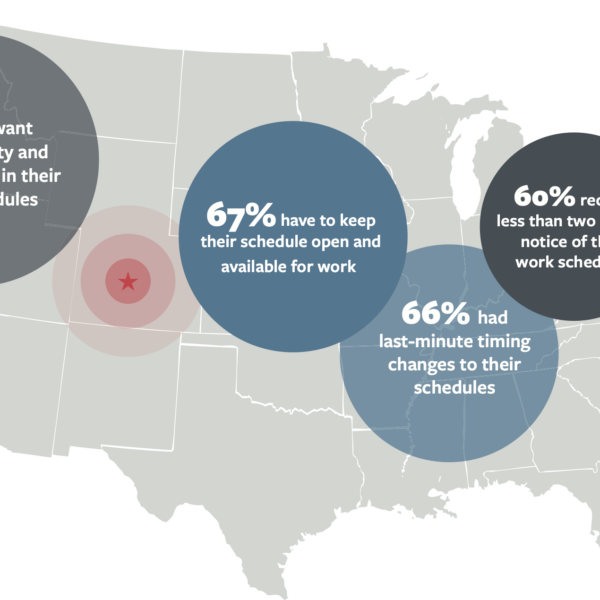
Shift Alumni
Evie is a PhD Student in sociology at UC Berkeley. Between 2021 and 2023 she worked for Shift as a pre-doctoral fellow at Harvard Kennedy School.
Email: bellewevelyn@gmail.com
Publications
-

Can’t Catch a Break: Intersectional Inequalities at Work
The labor market is the site of longstanding and persistent inequalities across race and gender groups in hiring, compensation, and…
-
![Working in The Service Sector in Colorado [UPDATED]](https://shift.hks.harvard.edu/wp-content/uploads/2023/01/CO-map-2-pdf.jpg)
Working in The Service Sector in Colorado [UPDATED]
This research brief is part of a series designed to advance our understanding of working conditions in the service sector—in…
-

Low Pay, Less Predictability: Fast Food Jobs in California
In January 2022, the California State Assembly voted in support of a first-of its-kind labor bill, known as the Fast…
-

Tax Filing in the Service Sector
We show that tax refunds are a substantial source of income for service sector workers, the equivalent of up to…
-

Working in the Service Sector in Colorado
This research brief is part of a series designed to advance our understanding of working conditions in the service sector—in…
-

Still Unstable: The Persistence of Schedule Uncertainty During the Pandemic
Unstable and unpredictable work schedules continue to be the norm for service sector workers – especially for workers of color,…
-

Half of Service Sector Workers Are Not Yet Vaccinated for COVID-19: What Gets in the Way?
We find that half of frontline, service sector workers reported being unvaccinated as of early June 2021.
-

Paid Family and Medical Leave in the U.S. Service Sector
This brief examines service sector workers’ need for and use of paid family and medical leave during the COVID19 pandemic.